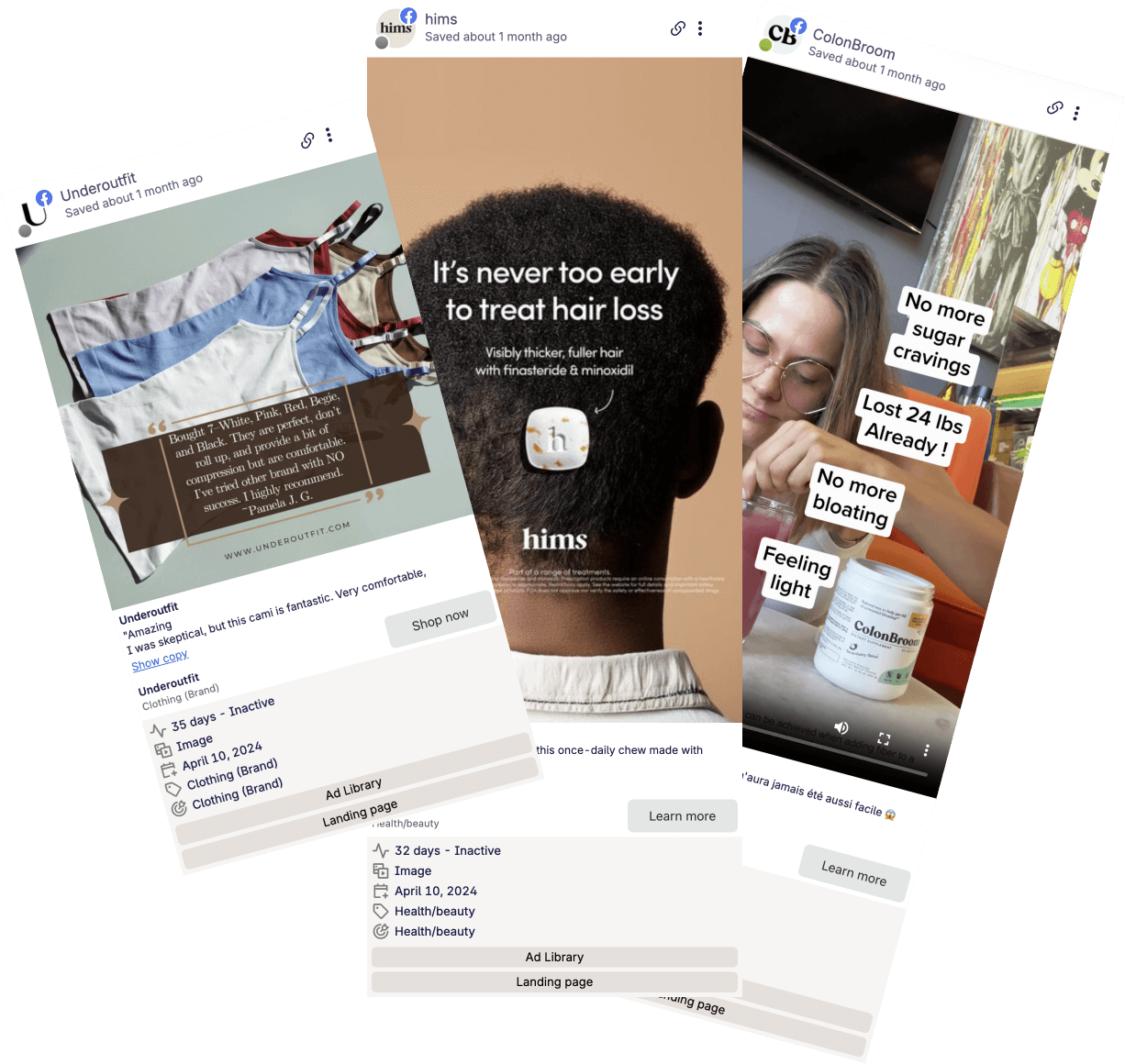Simple & reliable solution for organizing and saving ad inspo.
Frequency Capping Explained
What is Frequency Capping?
Frequency capping is a Facebook Ads feature that allows advertisers to limit the number of times their ad is shown to a single user within a specific time period.
By controlling ad exposure, frequency capping helps prevent overexposure, reduces ad fatigue, and ensures a better user experience, while optimizing ad performance by maintaining audience engagement.
What is the purpose of frequency capping?
Using Frequency capping, you can limit the number of times an individual user is exposed to the same advertisement within a specific time frame. This practice ensures that your audience does not feel overwhelmed or annoyed by repetitive ads, leading to better user experiences and more efficient use of your ad budget.
Key benefits of frequency capping include:
- Reducing ad fatigue: Prevents users from becoming bored or frustrated by seeing the same ad repeatedly.
- Maximizing engagement: Helps maintain the effectiveness of your campaign by ensuring ads are shown to a wider range of potential customers.
- Controlling costs: Prevents unnecessary expenditure on showing the same ad to uninterested users.
- Improving brand perception: Avoids creating a negative impression by overexposing your brand to the audience.
What is an example of a frequency cap?
A frequency cap sets a limit on how often a user sees an ad over a defined period. For example:
- Scenario: You are running a Facebook ad campaign promoting a new product.
- Frequency cap: You decide to limit your ad to three impressions per user within 24 hours.
- Result: Each user in your target audience will see the ad a maximum of three times in a day, helping to balance visibility and user experience.
Different platforms and ad networks allow you to configure frequency caps based on various time intervals, such as hourly, daily, or weekly, and across multiple devices.
What is the recommended frequency cap?
The recommended frequency cap can vary depending on your campaign goals, industry, and target audience. Here are some general guidelines:
- Brand Awareness Campaigns: Aim for a frequency cap of 3–5 impressions per user per week. This ensures sufficient exposure without oversaturation.
- Performance Marketing Campaigns: A slightly higher frequency cap, such as 5–10 impressions per week, might be suitable for driving conversions, as repeated exposure can reinforce purchase intent.
- Testing and Optimization: Start with a moderate cap and monitor your campaign's performance metrics, such as click-through rates (CTR) and conversion rates. Adjust based on data insights.
- Audience Segmentation: Different user segments may require different caps. For example, a highly engaged audience might tolerate more frequent ads than a broader, less engaged audience.
Ultimately, the "ideal" frequency cap depends on how your audience responds to repeated ad exposure. Use A/B testing to find the sweet spot for your specific campaign.
What is the frequency capping algorithm?
The frequency capping algorithm is a mechanism used by ad platforms to enforce the cap on ad impressions. Here’s how it typically works:
- Tracking Impressions: The algorithm tracks each user's interaction with the ad across sessions, devices, and platforms. Unique identifiers, such as cookies, device IDs, or user accounts, help monitor impressions accurately.
- Setting Limits: The advertiser configures the cap in the ad platform’s settings, specifying the maximum number of impressions allowed per user within a chosen timeframe.
- Decision-Making Process: When a user is eligible to see the ad, the algorithm checks their impression history. If the user has not reached the cap, the ad is displayed. If the cap has been reached, the algorithm withholds the ad and may serve an alternative ad or none at all.
- Cross-Device Considerations: Advanced algorithms consider cross-device tracking to ensure users are not overexposed due to accessing content from multiple devices.
The effectiveness of the frequency capping algorithm depends on the platform's ability to track users accurately while respecting privacy regulations, such as GDPR or CCPA. Advertisers should work with platforms that prioritize user privacy while providing robust frequency capping options.
Save Ads for eternity
The easiest way to find & save winning Ads
Get started today and see how easy it is to save Ads.
